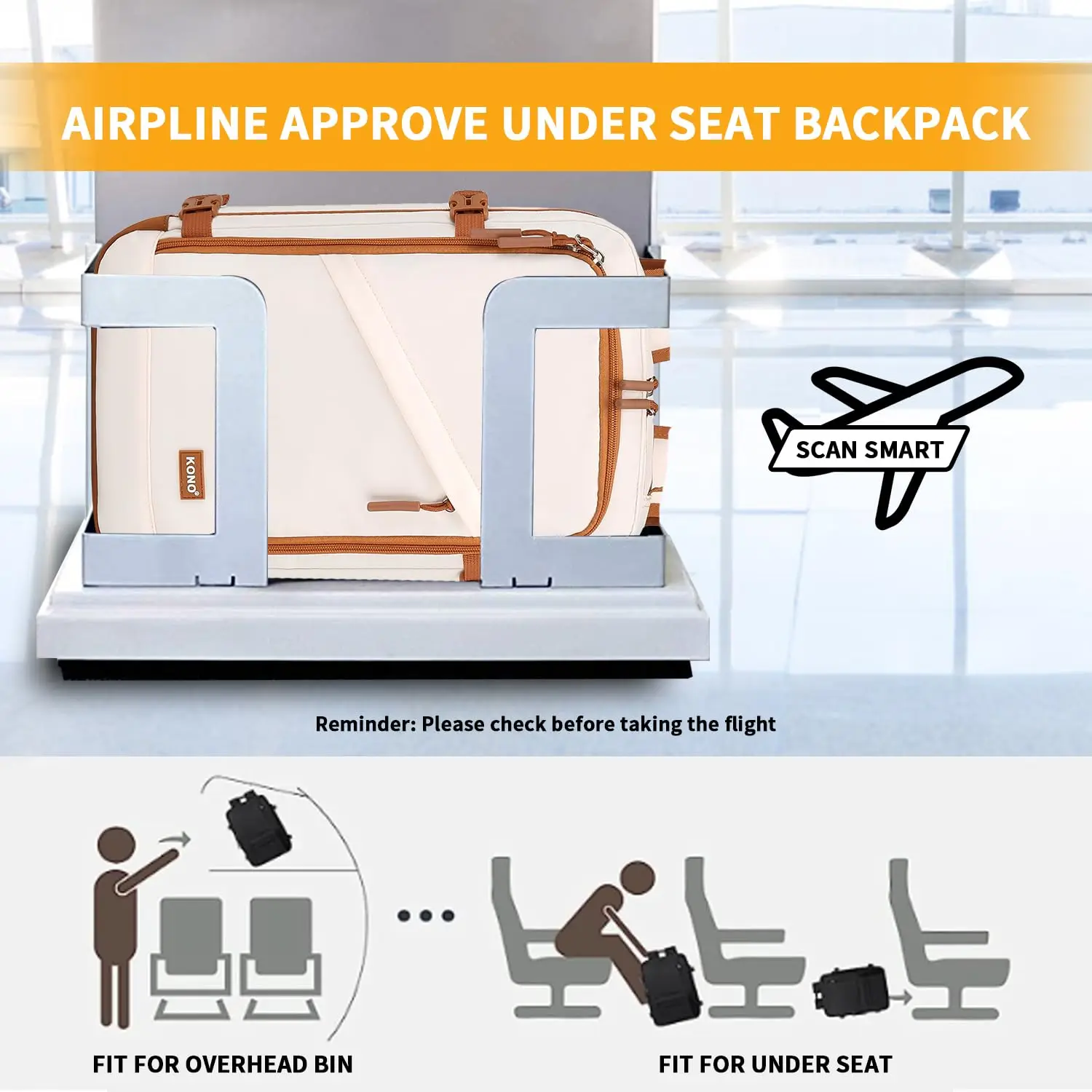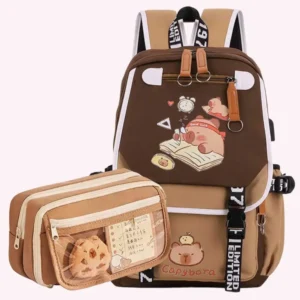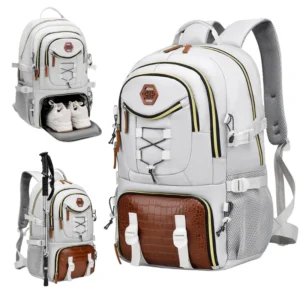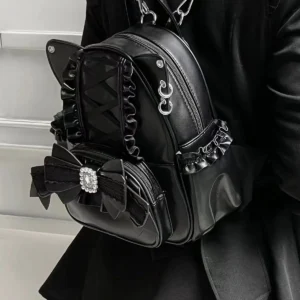Understanding Backpack Volume: What Do Liters Mean?
When shopping for backpacks, you’ll notice they’re typically sized by volume in liters. This measurement represents the total carrying capacity of the pack – but what does it actually mean in practical terms?
Backpack volume refers to the total amount of gear-carrying space available. A 40L backpack contains approximately 40 liters (or about 2,440 cubic inches) of storage space. For perspective, this is roughly equivalent to the interior space of a small mini-fridge or about 10-11 gallons of milk.
It’s important to understand how manufacturers measure this volume:
– Main compartment volume: The primary storage area
– Total capacity: Includes all pockets, compartments, and attachments
– Some brands include external pockets in their measurements, while others don’t
Choosing the right size directly impacts your comfort, carrying efficiency, and ability to bring necessary gear. However, remember that proper fit (how the backpack sits on your frame) is equally important as capacity. A well-fitted 40L pack often serves better than an ill-fitting 50L one.
Proper leather conditioning and waterproofing becomes increasingly important as you invest in quality backpacks, as protection from the elements affects both the bag’s appearance and longevity.
The 40L Backpack: Compact Versatility for Weekend Adventures
The 40L backpack sits in a sweet spot for many outdoor enthusiasts and travelers. This size offers impressive versatility while maintaining portability and comfort. Here’s why a 40L might be your ideal companion:
Ideal Use Cases:
– Weekend trips (2-3 days)
– Ultralight backpacking
– Air travel as a carry-on
– Daily urban commuting with occasional overnight needs
– Minimalist travel philosophy adherents
The 40L capacity encourages disciplined packing while still accommodating essential gear. For travelers, most 40L backpacks comply with airline carry-on restrictions, saving you checked baggage fees and time at the airport. The compact form also offers ergonomic advantages – less temptation to overpack means less strain on your back and shoulders.
For outdoor adventures, a 40L pack provides enough space for lightweight camping gear, food, water, and clothing for 2-3 day trips, particularly during warmer months when bulky items aren’t needed.
Mastering techniques for efficient packing becomes essential when working with a 40L backpack, allowing you to maximize the available space.
What Can You Fit in a 40L Backpack? Packing Examples
Understanding exactly what fits in a 40L backpack helps determine if this size meets your needs. Here are practical examples:
Weekend Trip (3 Days):
– 3 shirts/tops
– 2 pairs of pants/shorts
– 3-4 sets of undergarments and socks
– 1 light jacket or sweater
– Small toiletry bag with essentials
– Basic first aid kit
– Tablet or small laptop
– Phone charger and small electronics
– Water bottle
– Small travel towel
Ultralight Backpacking Gear:
– Lightweight tent or hammock system (3-4 lbs)
– 30-40°F sleeping bag (1-2 lbs)
– Sleeping pad (1 lb)
– Compact stove system (0.5 lb)
– Water filter (0.3 lb)
– 2 days of food in minimal packaging
– Rain jacket and insulating layer
– 1-2 clothing changes
– Headlamp, map, and essential tools
With smart backpack organization strategies, a 40L pack can accommodate surprising amounts of gear. Utilizing every pocket and space efficiently transforms what might seem like a tight fit into a perfectly viable option.
For air travelers, a 40L carry-on leather backpack provides enough space for about a week’s worth of clothing when packed efficiently, especially when using techniques like rolling clothes and utilizing packing cubes.
Pros and Cons of a 40L Backpack
Pros:
– Carry-on compatible with most airlines
– Lighter weight when empty (typically 2-4 lbs)
– Encourages efficient packing habits
– Better weight distribution and balance
– Easier maneuverability in crowded spaces
– Often features streamlined designs with less bulk
– Less strain on back and shoulders
– Greater mobility for active pursuits
Cons:
– Limited space for longer trips or winter gear
– May require washing clothes during longer journeys
– Less room for luxury items or souvenirs
– Can require compromises on comfort items
– Organization becomes more challenging
– Minimal space redundancy if needs change
– May need to attach gear externally in some scenarios
For travelers seeking versatility across various scenarios, leather travel backpacks provide durability while maintaining the benefits of manageable sizing.
The 50L Backpack: Expanded Capacity for Extended Adventures
The 50L backpack represents a significant step up in carrying capacity, offering 25% more space than its 40L counterpart. This additional volume transforms what you can accomplish on longer or more gear-intensive adventures.
Ideal Use Cases:
– Multi-day hiking trips (4-7 days)
– Extended travel with varied clothing needs
– Adventures in variable climates requiring layers
– Trips combining multiple activities
– Carrying photography or specialized equipment
– Group hiking where sharing common items
The extra 10 liters makes a substantial difference, particularly for bulkier items like sleeping bags, cooking equipment, or cold-weather clothing. Many 50L packs also feature more sophisticated suspension systems designed to distribute heavier loads comfortably across your body.
Most quality 50L backpacks include enhanced organization systems with more specialized compartments, load-bearing hip belts with pockets, and expanded attachment points for external gear like trekking poles or sleeping pads.
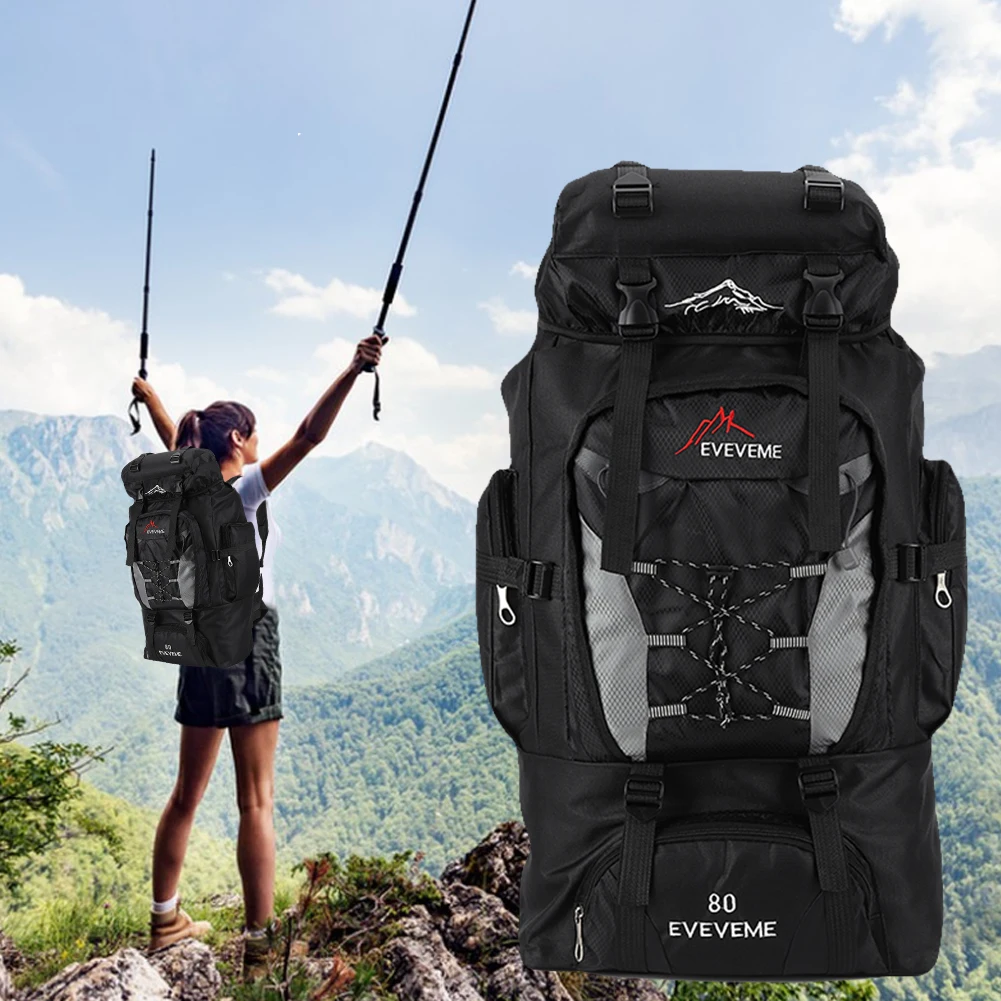
For those considering an even bigger option, understanding whether a 50L backpack is too big helps avoid unnecessary bulk and weight.
What Can You Fit in a 50L Backpack? Packing Examples
The expanded capacity of a 50L backpack significantly increases what you can comfortably carry. Here are practical examples:
Multi-Day Hiking Trip (4-5 Days):
– 3-season tent (4-5 lbs)
– Sleeping bag and pad (3-4 lbs)
– Cooking system with fuel (1-2 lbs)
– 4-5 days of food (5-7 lbs)
– 2L water capacity minimum
– Layered clothing system (base layers, mid-layer, insulation, rain protection)
– Extra footwear (camp shoes)
– Expanded first aid and emergency supplies
– Headlamp and electronics with backup power
– Personal hygiene items
– Navigation tools
Extended Travel (1-2 Weeks):
– 5-7 shirts/tops
– 3-4 pants/shorts
– 7+ sets of undergarments and socks
– Multiple layering options (sweater, light jacket, rain shell)
– Full toiletry kit
– Laptop and electronics with chargers
– Travel documents organizer
– Packable daypack
– Shoes or boots plus alternate footwear
– Laundry supplies for longer stays
The spacious design of large leather backpacks allows for both extended trips and specialized gear organization without compromising comfort.
Pros and Cons of a 50L Backpack
Pros:
– Sufficient capacity for week-long adventures
– Better organization with more compartments
– Accommodates bulkier cold-weather gear
– Reduced need to restock supplies during trips
– More comfortable carrying systems for heavier loads
– Room for luxury items that enhance comfort
– Flexibility for unexpected additions (souvenirs, shared gear)
– Better suited for technical equipment needs
Cons:
– Often exceeds airline carry-on restrictions
– Heavier empty weight (typically 4-6 lbs)
– Can encourage overpacking
– More challenging to maneuver in crowded environments
– Increased strain when fully loaded
– May feel cumbersome for shorter individuals
– Potential for back/shoulder fatigue on extended carries
– Higher profile makes ducking under obstacles more difficult
For outdoor enthusiasts, applying proper waterproofing techniques for leather bags becomes even more critical as pack size increases, particularly when carrying more valuable gear.
Key Factors to Consider When Choosing Between 40L and 50L
Trip Duration
The length of your adventure often determines your capacity needs. As a general guideline:
– 1-3 days: 40L is typically sufficient
– 4-7 days: 50L offers better comfort
– 7+ days: 50L with efficient packing or largerActivity Type
Consider the technical requirements of your primary activities:
– Urban travel and sightseeing: 40L provides mobility
– Mixed hiking and travel: Either size works depending on gear
– Technical mountaineering: 50L accommodates specialized equipment
– Photography-focused trips: 50L offers better protection for equipmentPersonal Packing Style
Be honest about your habits:
– Minimalist packers can stretch a 40L to longer trips
– Those who prefer options or comfort items will appreciate 50L
– First-time backpackers often benefit from 50L’s forgivenessSeasonal Considerations
– Summer trips: 40L often suffices
– Winter adventures: 50L accommodates bulkier insulation
– Variable climates: 50L allows for layering optionsTravel Restrictions
– Primarily flying: 40L typically meets carry-on requirements
– Primarily driving or train travel: Either size works fine
– International budget airlines: Strict 40L or smaller enforcement
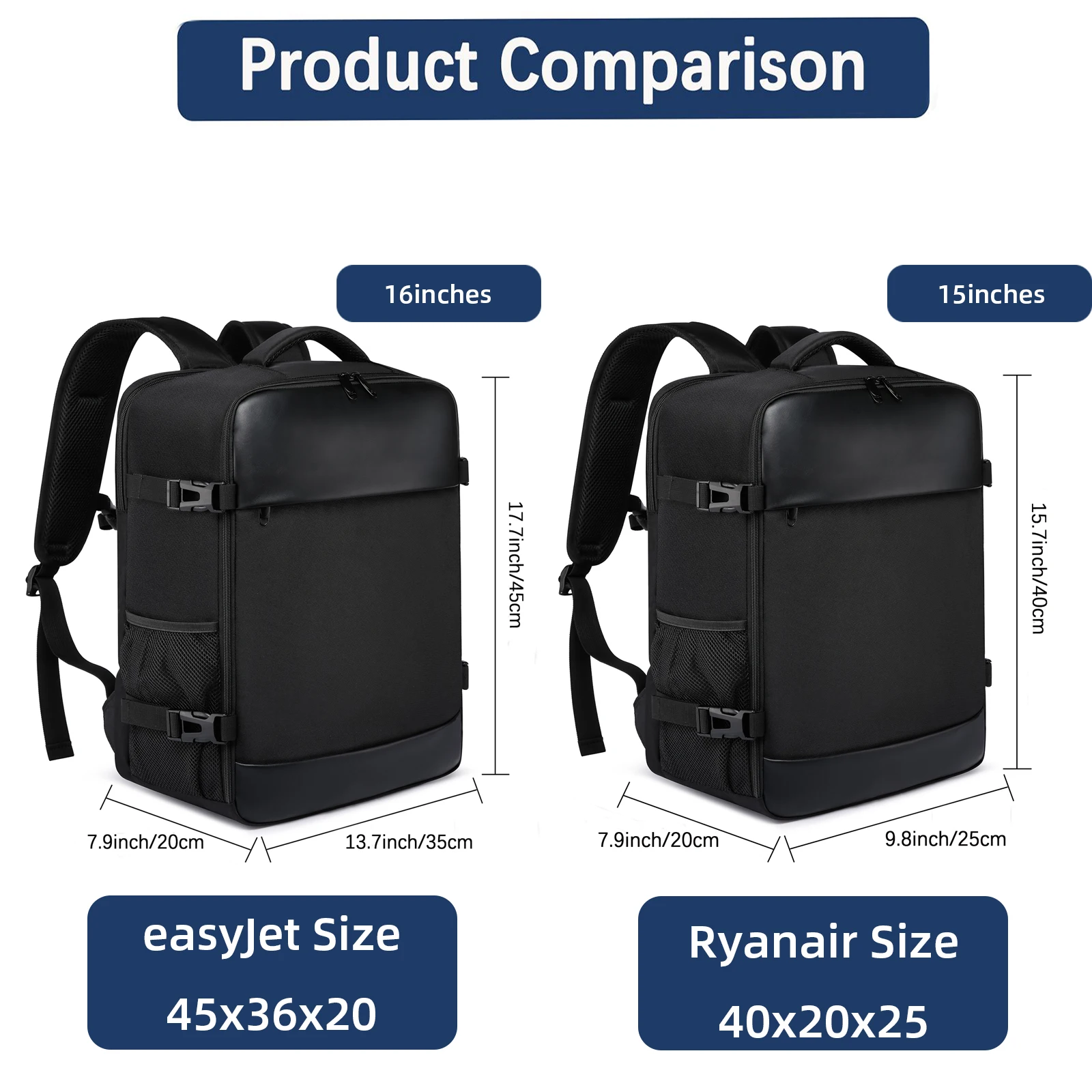
For those seeking alternative styling with similar functionality, leather rucksack designs offer classic aesthetics with modern carrying capabilities.
40L vs. 50L: Direct Comparison Table
| Factor | 40L Backpack | 50L Backpack |
|---|---|---|
| Ideal Trip Duration | Weekend trips (1-3 days) | Extended trips (4-7 days) |
| Carry-on Compatibility | Generally accepted on most airlines | Usually exceeds carry-on limits |
| Average Empty Weight | 2-4 pounds | 4-6 pounds |
| Typical Packed Weight | 15-25 pounds | 25-35+ pounds |
| Best Activities | Urban travel, ultralight hiking, minimalist adventures | Multi-day backpacking, technical pursuits, variable weather |
| Organization | Simpler design, fewer compartments | More compartments, specialized storage |
| Maneuverability | Higher mobility, less restrictive | Bulkier, requires more clearance |
| Comfort Features | Basic suspension, lighter padding | Advanced suspension, load-bearing features |
Understanding proper leather maintenance for daily use helps extend the life of your backpack regardless of size choice.
Making Your Decision: A Quick Guide
Choose a 40L backpack if:
– You primarily take weekend trips (1-3 days)
– You’re an efficient, minimalist packer
– Air travel is your primary transportation mode
– You prioritize mobility and lightweight carrying
– You prefer urban exploration with occasional outdoor adventures
– Your trips typically occur in warm, predictable weather
– You’re smaller in stature or have a lighter frame
Choose a 50L backpack if:
– Your trips regularly extend beyond 3 days
– You carry specialized equipment (camera gear, climbing tools)
– You adventure in variable or cold weather conditions
– You prefer having extra clothing options
– You value comfort items while traveling
– You often carry gear for multiple people (partners or children)
– You have a larger frame that can comfortably distribute weight
For those still uncertain, consider that most experienced travelers find a quality 40L sufficient for most needs, while a 50L offers peace of mind for gear-intensive activities.
Our mens leather travel backpack collection offers options in both size ranges to accommodate different adventure styles.
Expert Tips for Maximizing Backpack Space (Regardless of Size)
Use Compression Sacks for Clothing
Vacuum-sealed or compression bags can reduce clothing volume by up to 60%, transforming what fits in your pack.Embrace Multi-Purpose Gear
Items that serve multiple functions eliminate redundancy – like a jacket that works as a pillow or pants that convert to shorts.Pack by Density
Place heavy items close to your back and centered in the pack for optimal weight distribution and balance.Fill Dead Space
Stuff socks, underwear, and small items inside shoes or cooking pots to utilize every cubic inch.Layer Your Packing
Place infrequently used items at the bottom, daily essentials in the middle, and immediate needs at the top or in outer pockets.Use the Outside Strategically
Attach bulky, lightweight items (sleeping pads, tent) to exterior attachment points to free interior space.
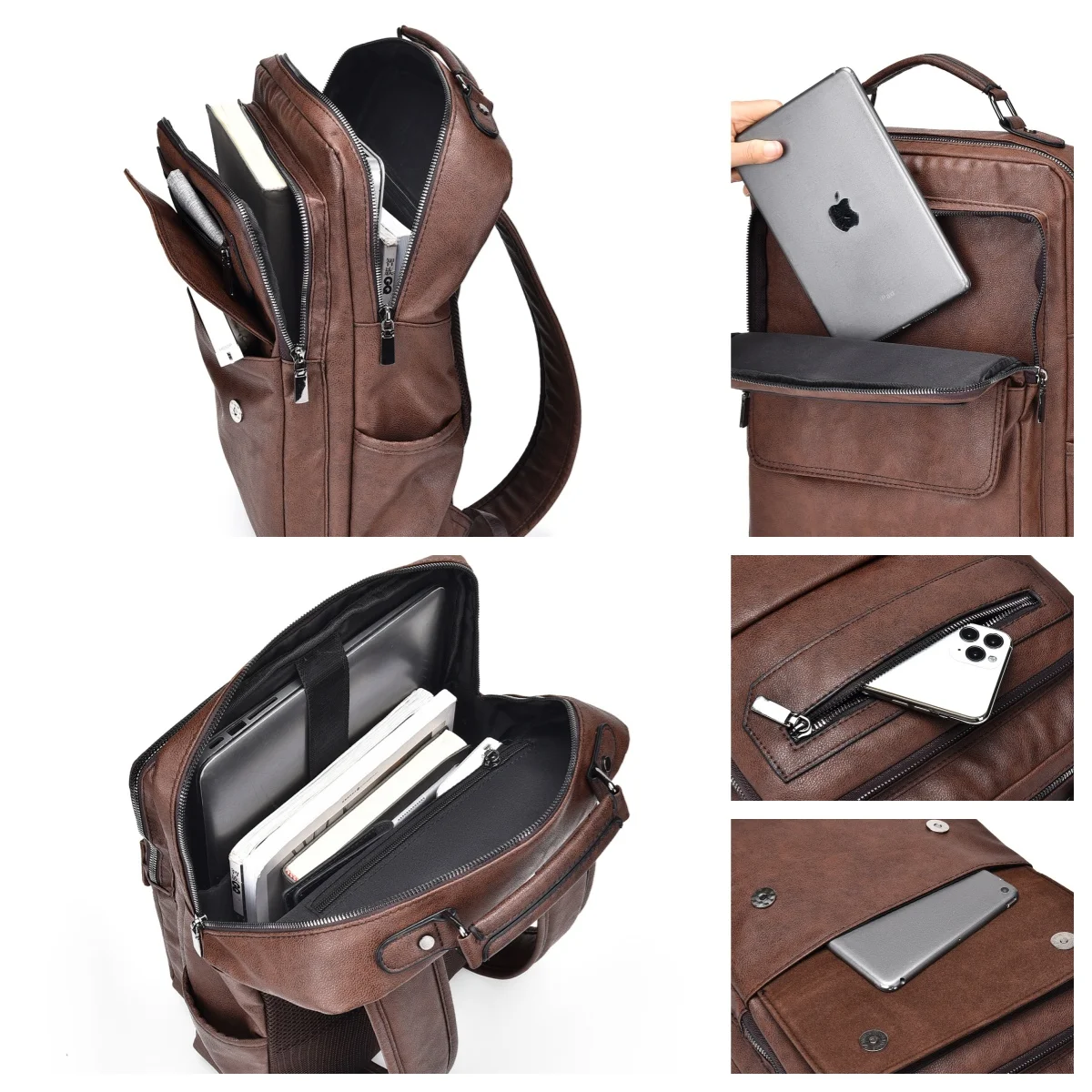
Regular conditioning of your leather backpack maintains its water resistance and flexibility, essential qualities regardless of your backpack size.
14 Inch Leather Laptop Backpack, Brown Leather Backpack, Men's Leather Backpack, Vintage Leather Backpack
Price range: $177.28 through $199.12 Select options This product has multiple variants. The options may be chosen on the product pageCarry On Leather Backpack, Roll Top Leather Backpack
Price range: $77.76 through $96.48 Select options This product has multiple variants. The options may be chosen on the product page17 Inch Leather Laptop Backpack, Men's Leather Travel Backpack, Men's Leather Work Backpack
Price range: $106.28 through $143.88 Select options This product has multiple variants. The options may be chosen on the product page- Price range: $80.72 through $108.04 Select options This product has multiple variants. The options may be chosen on the product page
15 Inch Leather Laptop Backpack, Carry On Leather Backpack
Price range: $136.84 through $139.88 Select options This product has multiple variants. The options may be chosen on the product pageLarge Leather Backpack, Women's Leather Backpack
Price range: $97.12 through $97.96 Select options This product has multiple variants. The options may be chosen on the product page
When Might You Need to Go Larger Than 50L?
While 40-50L backpacks serve most general needs, certain scenarios might require even larger capacity:
Situations requiring 60L+ packs:
– Extended wilderness expeditions (7+ days without resupply)
– Winter camping and mountaineering with specialized gear
– Professional photography or video production trips
– Family backpacking where carrying gear for children
– Technical climbing requiring extensive safety equipment
– International travel exceeding 2-3 weeks in variable climates
Winter adventures particularly demand additional volume, as sleeping bags can be twice the size, and clothing layers take significantly more space. A winter sleeping bag rated to 0°F might require 15-20 liters alone, compared to a summer bag needing just 5-7 liters.
For those rare occasions requiring maximum capacity, vintage leather backpack styles often feature expandable designs that maintain aesthetics while offering functionality.
Frequently Asked Questions About Backpack Sizing
Is a 40L backpack enough for a week-long trip?
Yes, with efficient packing and access to laundry facilities. Many experienced travelers routinely use 40L packs for trips lasting 7-10 days by embracing minimalist packing techniques and versatile clothing options.
Can a 50L backpack be used as a carry-on?
Generally no. Most airlines restrict carry-on bags to approximately 40-45L maximum. While some soft-sided 50L packs can compress to meet requirements when not fully packed, most will exceed standard carry-on dimensions.
How do hiking backpacks differ from travel backpacks of the same size?
Hiking backpacks typically feature more technical suspension systems, weather resistance, and external attachment points. Travel backpacks prioritize organization, security features, and often include laptop compartments with more urban-friendly aesthetics.
How much should a loaded backpack weigh relative to body weight?
Most experts recommend carrying no more than 20% of your body weight for optimal comfort and safety. For a 150-pound person, that means keeping your fully loaded pack under 30 pounds. More experienced hikers might handle up to 25-30% for short periods.
Should I buy a backpack that’s slightly too big or slightly too small?
When in doubt, slightly too small is generally better. A too-large pack encourages overpacking and creates an unbalanced load, while a slightly smaller pack forces packing discipline and remains more comfortable when carried for extended periods.
